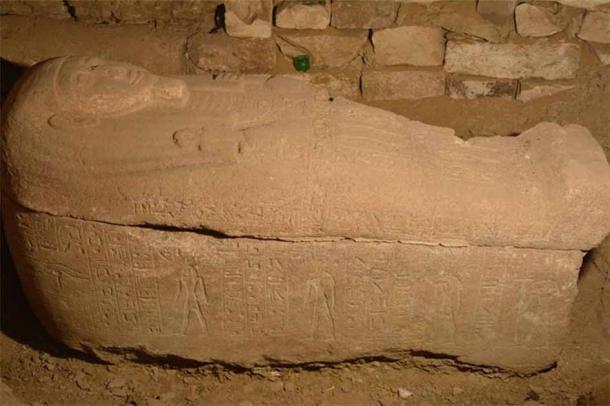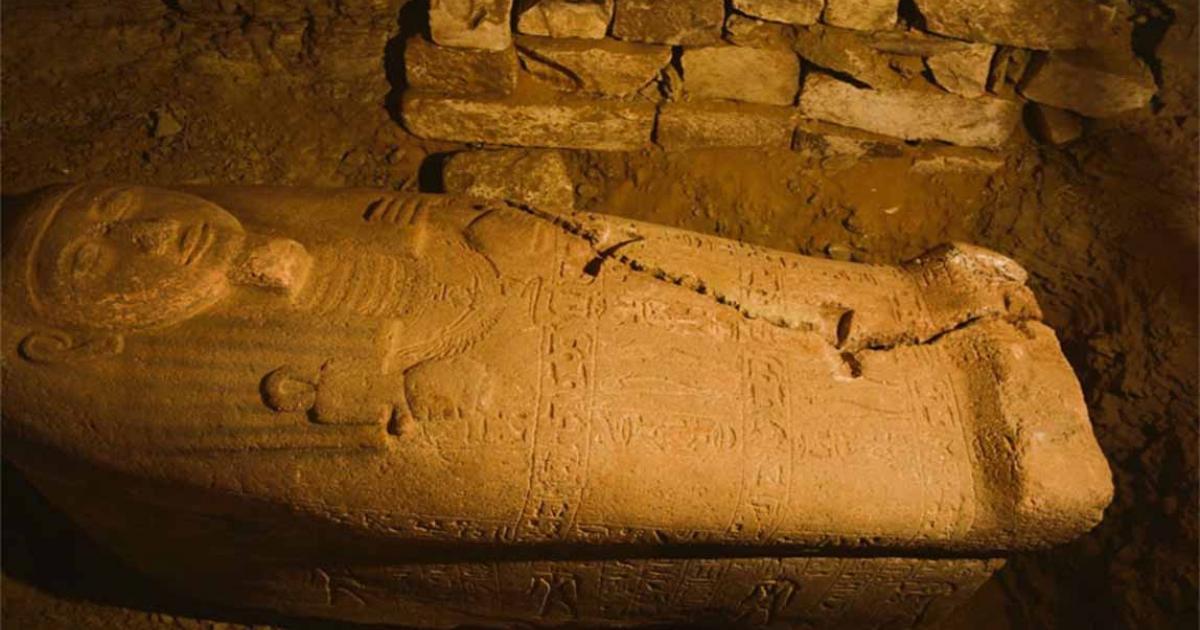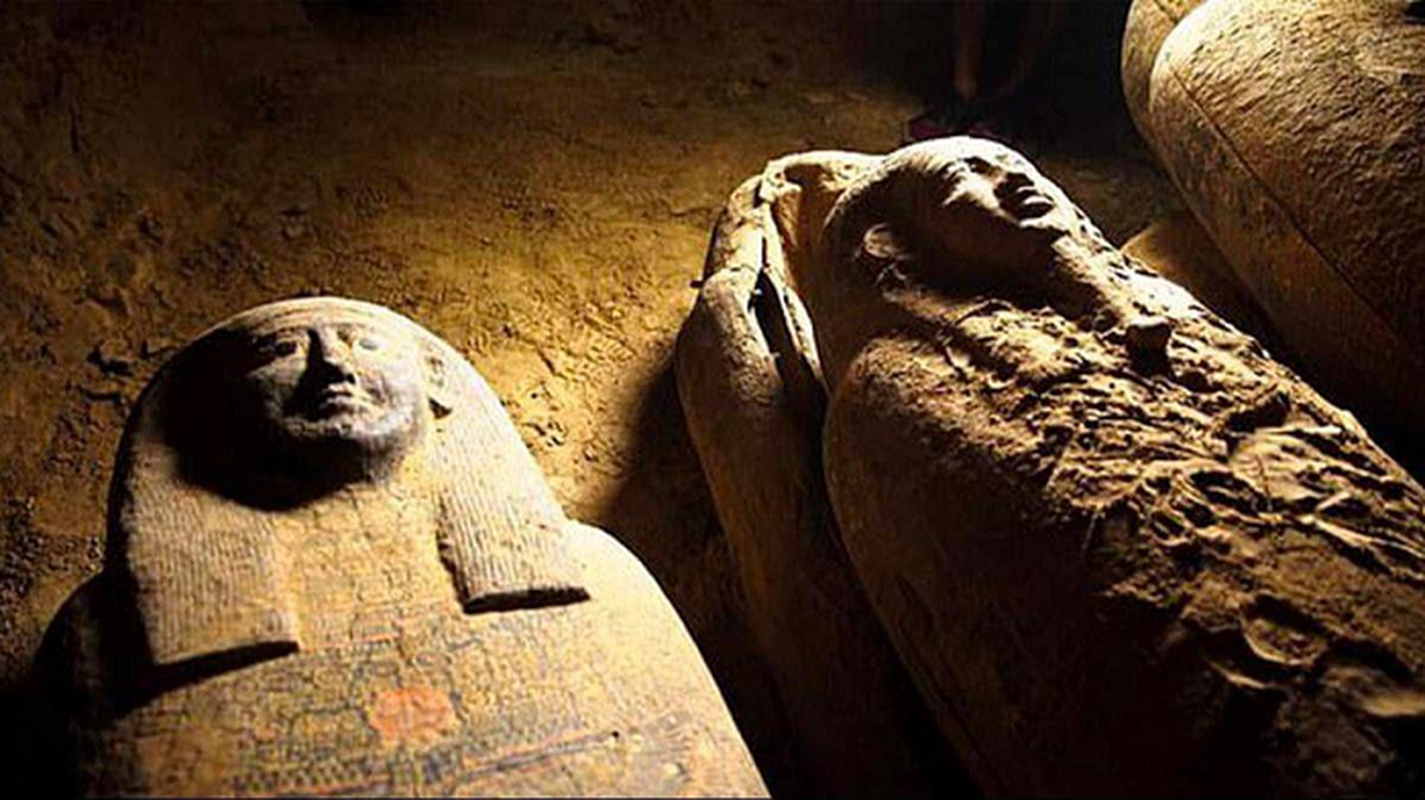The pink-red granite sarcophagus of Ptahmweia, a royal secretary during the reign of Ramses II (1279-1213 BC) of the Nineteenth Dynasty, has been discovered at the Saqqara necropolis. This is the latest in a series of spectacular discoveries at the Saqqara site, a vast necropolis of the ancient Egyptian capital of Memphis.
This 3,200-year-old tomb from the 13th century BC belonged to “a high-ranking official” whose sarcophagus lid was found broken. This suggests it had been opened and possibly looted, similar to many other tombs in the area, according to Dr. Ola Al-Ajezi, head of the archaeological team from the Faculty of Archaeology, Cairo University.
The Royal Secretary’s Sarcophagus and a Tricky Tomb Shaft

The sarcophagus was uncovered during excavations in the Saqqara Monuments Area, south of the ascending corridor of the King Unas shrine. Ptahmweia was described as the “royal secretary, chief overseer of cattle, head of the treasury of the Ramasseum,” Ramses’ funerary temple in the Theban necropolis at Luxor, said Mostafa Waziri, head of Egypt’s Supreme Council of Antiquities. Royal secretaries were also “responsible for the divine offerings to all the gods of Upper and Lower Egypt,” Waziri added in a press release.
The entrance to the tomb’s shaft was located at the center of a peristyle court measuring 2.2 x 2.1 meters (7.2 x 6.8 feet). This led to a subterranean burial chamber opening on the west side of the shaft at a depth of 7 meters (22.96 feet), which then led to a square room measuring 4.5 x 4.5 meters (14.7 feet along the perimeter).
This room connected to two other rooms on the west and south sides, which were completely empty. On the north side, a cut in the floor led to stairs descending to the burial chamber, which measured 4.6 x 3.7 meters.
Examining the Red-Pink Granite Sarcophagus Surface

The sarcophagus had an anthropoid lid depicting the deceased’s facial features with arms crossed. The crossed arms held the Djed symbol of Osiris and the Tyet symbol of the goddess Isis. Osiris and Isis were married siblings, and their story is central to Egyptian mythology, involving themes of vengeance and rebirth. Scenes representing Horus and his four sons were also found on the sarcophagus lid, along with prayers written in hieroglyphs meant to “safeguard the deceased” on their journey to the next world. The lid featured traditional inscriptions of New Kingdom sarcophagi, including the bearded head of the owner and the sky-goddess Nut seated on his chest with wings extended.
“The lid of the sarcophagus was broken diagonally, and the missing part was found in the corner of the chamber. It has been restored to its original position. The sarcophagus was empty except for some residue of tar from the mummification on the bottom,” said Professor Al-Ajezi to CBS News.

In related news, Israeli archaeologists recently announced the discovery of a burial cave from the time of Ramses II in northern Israel, containing bronze artifacts and dozens of pottery pieces. Additionally, in May, 150 bronze statuettes and 50 wooden sarcophagi from the New Kingdom era were found, along with the tomb of Mehtjetju near the Step Pyramid of Djoser. Mehtjetju was responsible for guarding the pharaohs’ top-secret documents.
Critics argue that showcasing such significant finds revitalizes and boosts Egypt’s tourism industry and promotes the Grand Egyptian Museum at the foot of the pyramids, touted as the “largest archaeological museum in the world.” All these discoveries offer fascinating insights into Egypt’s rich history.

